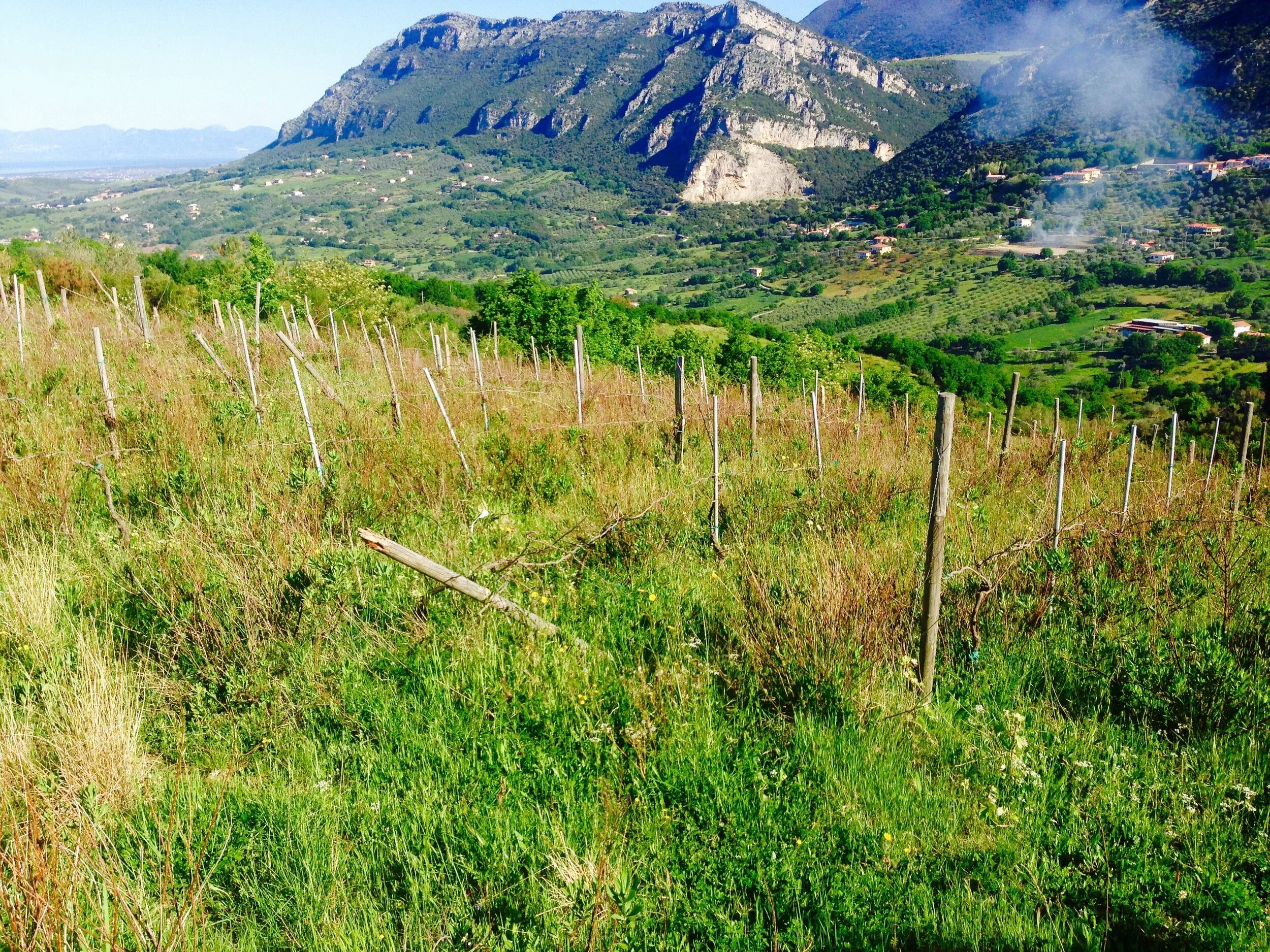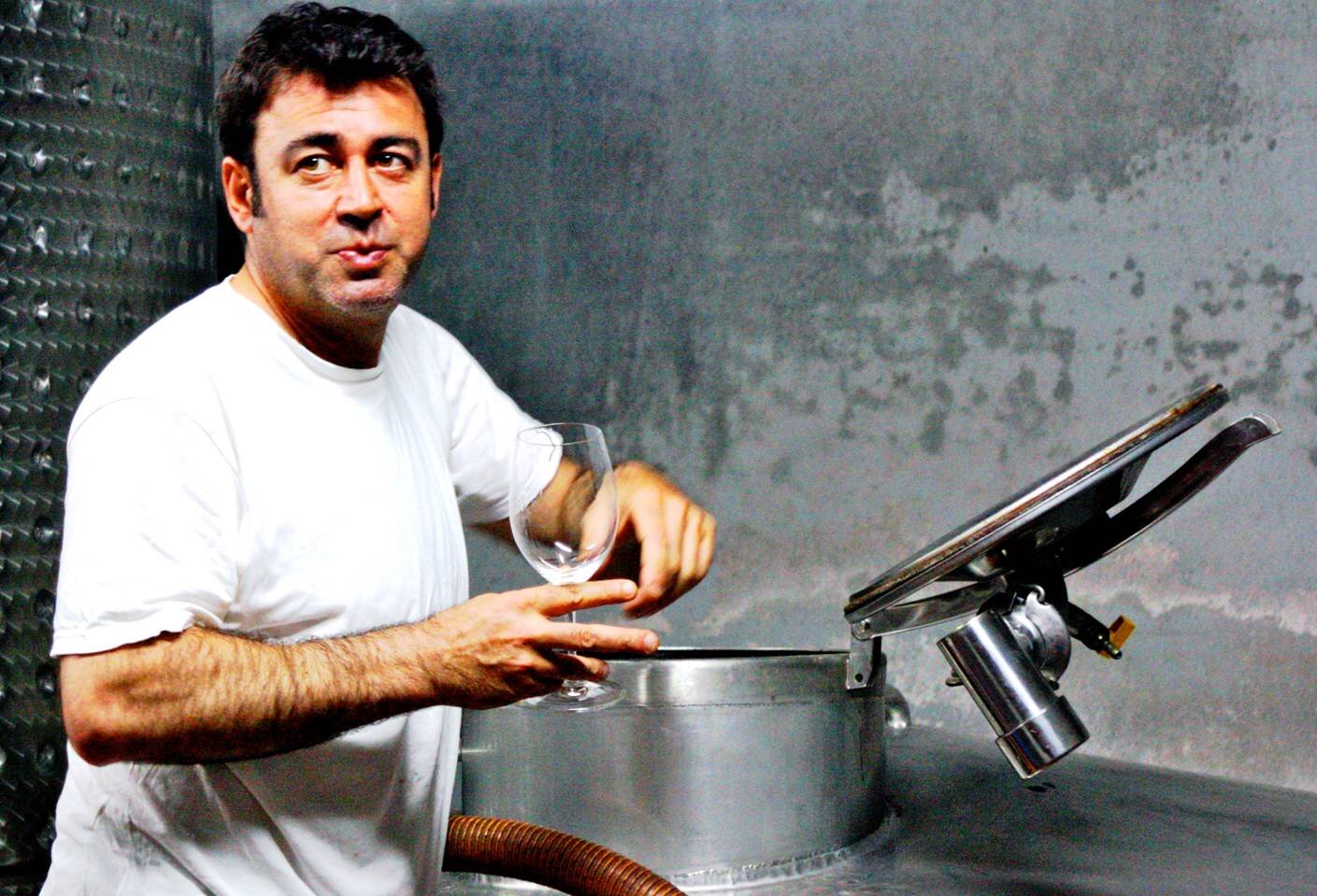Pietracupa - Campania, Italy
Campanian vista.
Sabino Loffredo.
PIETRACUPA: AUMENTANDO L'ANTE
It is a good bet if you'd been in the car with us throughout our 1000 kilometer or so treks across Campania - like us - you'd be "intreccio" (bowled over) by kaleidescopic terroir: from gnarled seaside vines downslope, to mountainous terraces and steep ridges, to the crazy, porous grey volcanic soils and multi-colored hard-rock granite outcroppings - both scary high and jagged scary. A whole lot of kilometers on the dial still come up short touring spectacular Campanian vinous highlights. The wines? Scrumptiously well steeped in value.
Another producer from Campania? Perhaps we're raising our own ante (aumentando l'ante), but Campania's wide, rich berth of styles, grapes and terroir is why team E&R spent collective weeks exploring Campania's wine regions. It is why we are working with Luigi Maffini, Azienda San Giovanni, I Cacciagalli, Raffaele Palma, and our man Luigi at Azienda Reale. Their collective cool represents an engaging portrait of the wine feast Campania can be.
Campania is home to treacherous seaside cliffs, Mount Vesuvius and sister volcanoes, the frenetic city of Naples, the glowing Amalfi coast. Underfoot, volcanoes sizzle with action while the sea marks the edges of things. Ruins of Greek temples here, pre-Roman mosaics there. Here the fire meets the water. It's a beautiful place, with smells, colors, and ancient history on the breeze.
And this good land makes for superb, diverse, sense-defying wines. The dramatic slopes of Campania are hardscrabble places to farm and political turmoil (both since antiquity and more recently) has threatened the transmission of winemaking tradition. So the story of wine in Campania today is a story about individual farmers. Passionate, reverent, determined people like Ida, Mario, Luigi, Gaetano, Diana are on the vinous frontlines everyday. Their work revives old traditions by experimenting with traditional (ancient) Italian winemaking techniques, cultivating rare and nearly extinct grapes, and telling their stories.
Now, we venture further inland: deeper in and higher up to Montefredeane, near the famous wine town of Avellino. This, Campania's most classic zone, is the most represented part of the region in America. With its justly famed Taurasi reds and the world's high points in Greco di Tufo and Fiano di Avellino this midsection of Campania is well worth the proverbial detour.
So yes, why not, another Campanian! E&R's first "almost direct imports" of Aglianico from Avellino and our first DOCG wines from Greco di Tufo and from Taurasi - a dynamic, yummy entree.
A LITTLE ABOUT SABINO'S PIETRACUPA
Circumstance dictates chance, or does chance dictate circumstance? Either way, facing bizarre travel and routing situations in concert with backroads blocked and an impassable bridge fiasco, we ended up not able to see Sabino Loffredo at his small winery - Pietracupa. Via hindsight it is hard to say who was more disappointed, us or Sabino. As always when the wines are great, we persist, so now some two years later, we happily welcome Sabino's wines. Though we have yet to plant our heels in his winery or vineyard, we did manage to happily plant our palates on a cross-section of his wines. 1st Class from start to finish.
Sabino Loffredo is a doer. At his winery at Montefredane, due east of Naples, just above Avellino he's single handedly transformed his small farm into one of the best wineries in Campania. He is a Greco master, that waxy, chenin-blanc-esque grape. He also grows the equally marvelous white grape fiano and the red grape aglianico. His vineyards rise up into the mountains at 2000 feet, and share in the terroir of the region with soils deposited by volcanoes of clay, sandstone, and limestone.
Few of his wines get to America, but his recognition in Italy is major - a perennial Three Glass winner from Gambero Rosso, he gets regular praise from all their major press. His vineyards - about 2000 feet above sea level - are composed of volcanic soil: a unique soil of clay, sandstone and limestone which together bring singular qualities to the wines. You can taste it, and it is beautiful. Can we simply say his wines are terrific?
We have had Sabino's wines in Oregon since 2017.
RED AND WHITE ARCHETYPES: GRECO DI TUFO AND AGLIANICO
Team E&R is excited to have a sensational Greco di Tufo to offer - our first. Pietracupa's is a Three Glass winner from Gambero Rosso. Author Ian d'Agata, in his epic 600-ish page landmark book "Native Wine Grapes of Italy" says Piertacupa's Greco "may be the best Greco wine of all." That said, in the epitome of grape books - Jancis Robinson's 1220+ page "Wine Grapes" - her alphabetic list singles out only six producers, Sabino's Pietracupa included.
"Greco" is the grape though "Greco di Tufo" is specific and only allowed from the small area Sabino is in. Like the name Champagne, Greco di Tufo can only be used for wines near the hamlet of Tufo, the homeland of about only 900 residents. Most of the town and its surroundings sit above old sulfur mines, hence from tufa, the name "Tufo." Even by Italian criteria, this is some rare terroir. When it comes to Aglianico, Sabino is no slouch and to suggest his reds play second fiddle to his whites (Fiano, Falanghina in addition to Greco di Tufo) would be like saying Beatles are not so good at slower songs. We’ve carried two of Sabino's Aglianicos. Each overachieve in relation to price among Aglianico bottles we are familiar with. The first, "Quirico", is fresh and Nebbiolo-like, while the more firm Taurasi is a bellwether for the appellation in its own silky, punchy terroir explicit way.
When in stock, wines from this producer appear below. Click on each wine for more detail.




